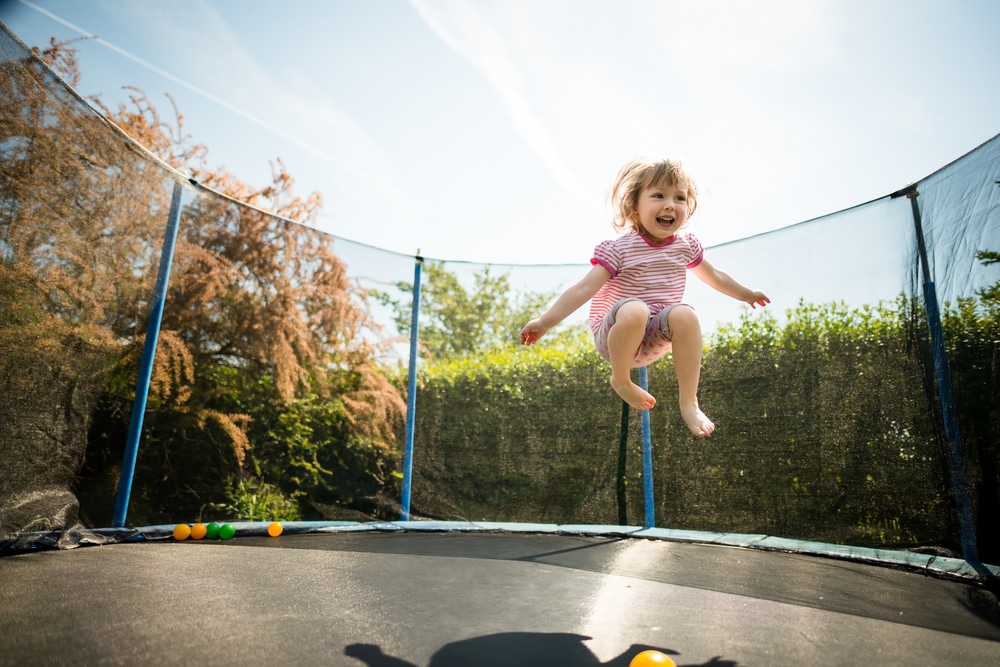Backyard trampolines are becoming more and more of a fixture in neighborhoods. Even though they can be an immense source of fun for kids and parents alike, their presence can also expose homeowners to a tremendous amount of risk.
There are many things that a homeowner should consider before they purchase a backyard trampoline. Making these considerations prior to purchase and taking these precautions can limit liability should something go wrong.
Your Backyard Trampoline and Your Homeowner’s Insurance
The risks of owning a backyard trampoline can be astronomical. Because of this, the presence of one on your property can have a substantial effect on your homeowner’s policy. In many cases, homeowner’s insurance agencies will not insure a property with a backyard trampoline.
Before you install a trampoline in your yard, it is essential that you check with your homeowner’s insurance company to make sure it will not cause an issue with your policy. Even if the company that insures your home will allow a trampoline to be installed in your backyard, the additional liability insurance that you might have to take on to accommodate the risk might be prohibitive.
How Many People Should Use a Trampoline at Once?
When seeing people on a trampoline, you mostly see groups of people jumping together. From a fun perspective, this might look like the best way to enjoy the trampoline. From a liability perspective, however, this is the worst thing you could do.
The risk of personal injury is ten times higher when two people are jumping instead of one. Trampoline collisions can cause significant orthopedic damage and expose homeowners to incredible risk in addition to the liability of having a trampoline in the backyard. When the trampoline is in use, it is best for one person to jump at a time, and the others cheer them on from the perimeter.
Don’t Be an Acrobat
When jumping on a trampoline, you might want to try out that flip you saw in a YouTube video. On a backyard trampoline, however, this is not something you should do. Flips and somersaults are one of the leading causes of cervical injuries from trampoline usage, and can cause significant lifelong injuries. If you’d like to do flips and somersaults, these are best done at a commercial gymnasium, where you’ll find the proper equipment and staff support to avoid a big injury from a tragic mistake.
What is an Attractive Nuisance?
A huge issue to consider is attractive nuisance. When a potentially dangerous condition that would be likely to attract children exists on a property, the doctrine of attractive nuisance can come into play. The property owner should reasonably expect that the condition will draw children in but could also lead to injury. For example, playground equipment or a pool is present on a homeowner’s property, and children sneak onto the property to use the equipment. Even though they may not have been given permission to use the trampoline, the homeowner can still be liable for injuries. It is important to take all precautions to ensure that the trampoline is in a closed and locked area and that access to the area is restricted. No entry point (i.e. ladder) should be left next to the trampoline that would allow young children to access the equipment unsupervised. Taking these precautions will lower the homeowner’s potential liability as much as possible.
Contact a Premises Liability Attorney for Legal Advice
In any case, consulting a San Antonio premises liability lawyer before purchasing a trampoline is a great idea. An experienced attorney can give you valuable information on the risks of having a trampoline on your property, as well as provide the steps you need to take to protect your main asset: your home. Contact the Villarreal & Begum Law Firm today for a consultation and let us work for you.
The Villarreal & Begum, LAW GUNS dedicates their time and effort towards helping people in Texas find justice for personal negligence encountered while living their normal, everyday lives.




